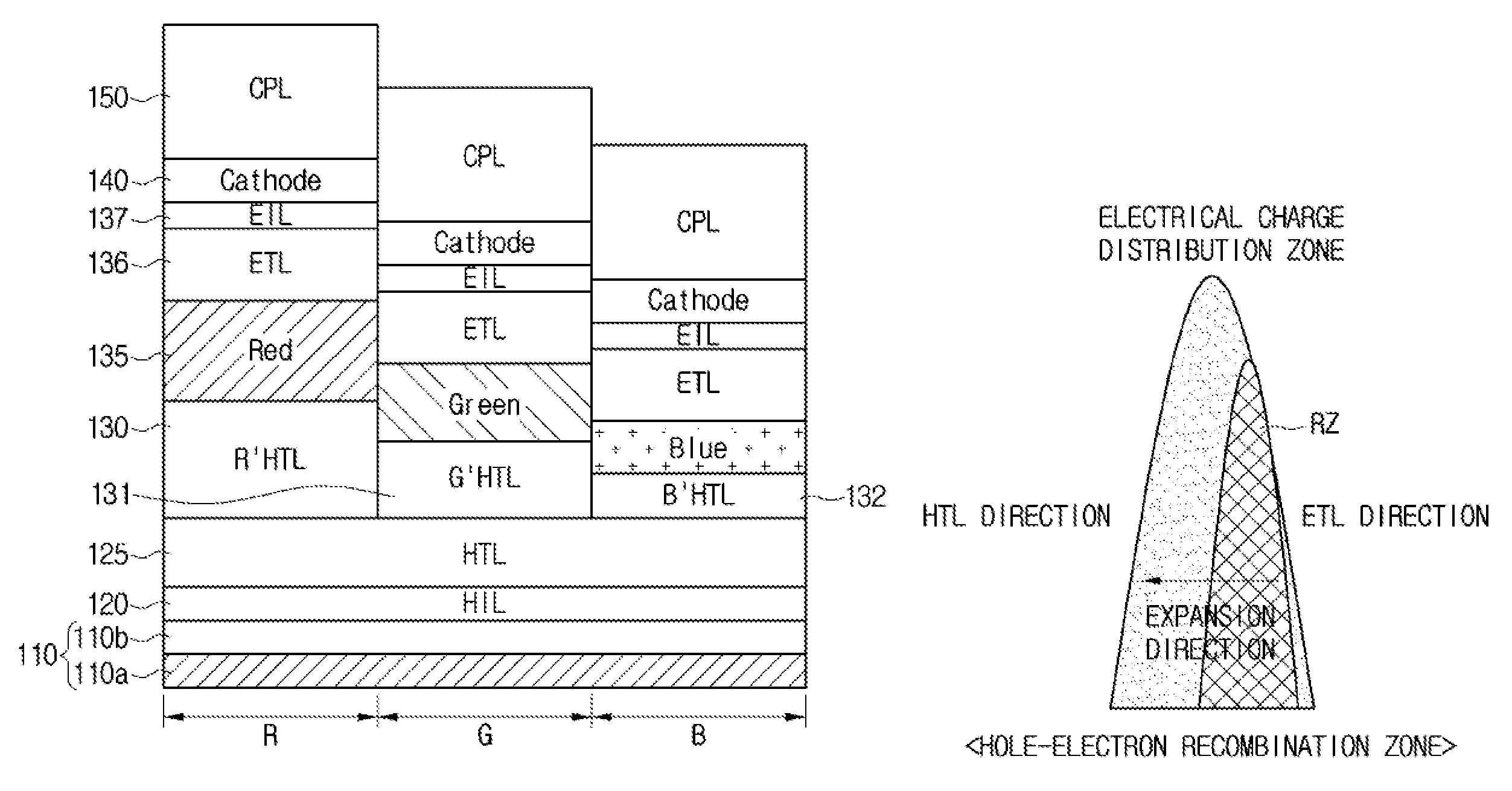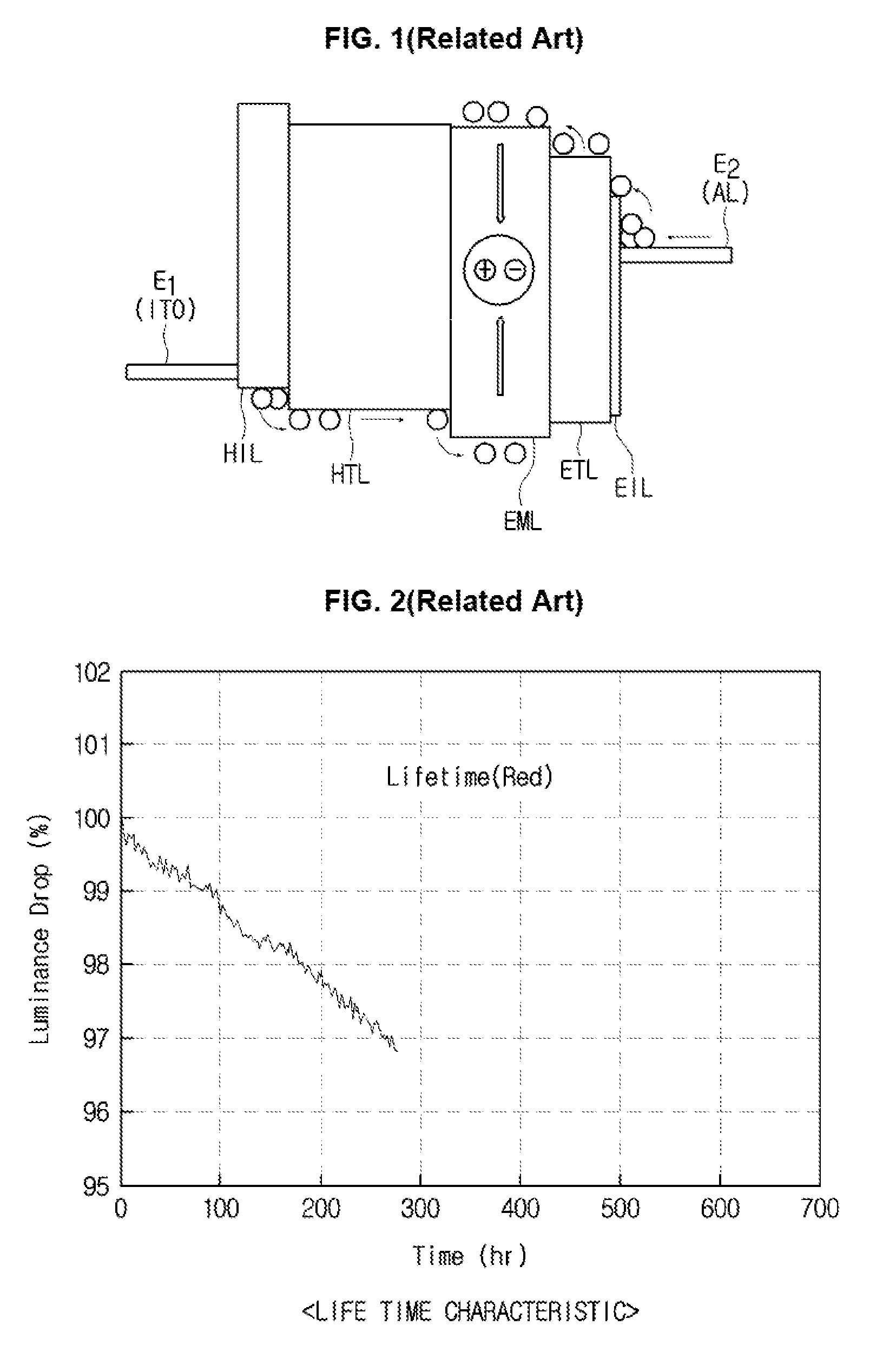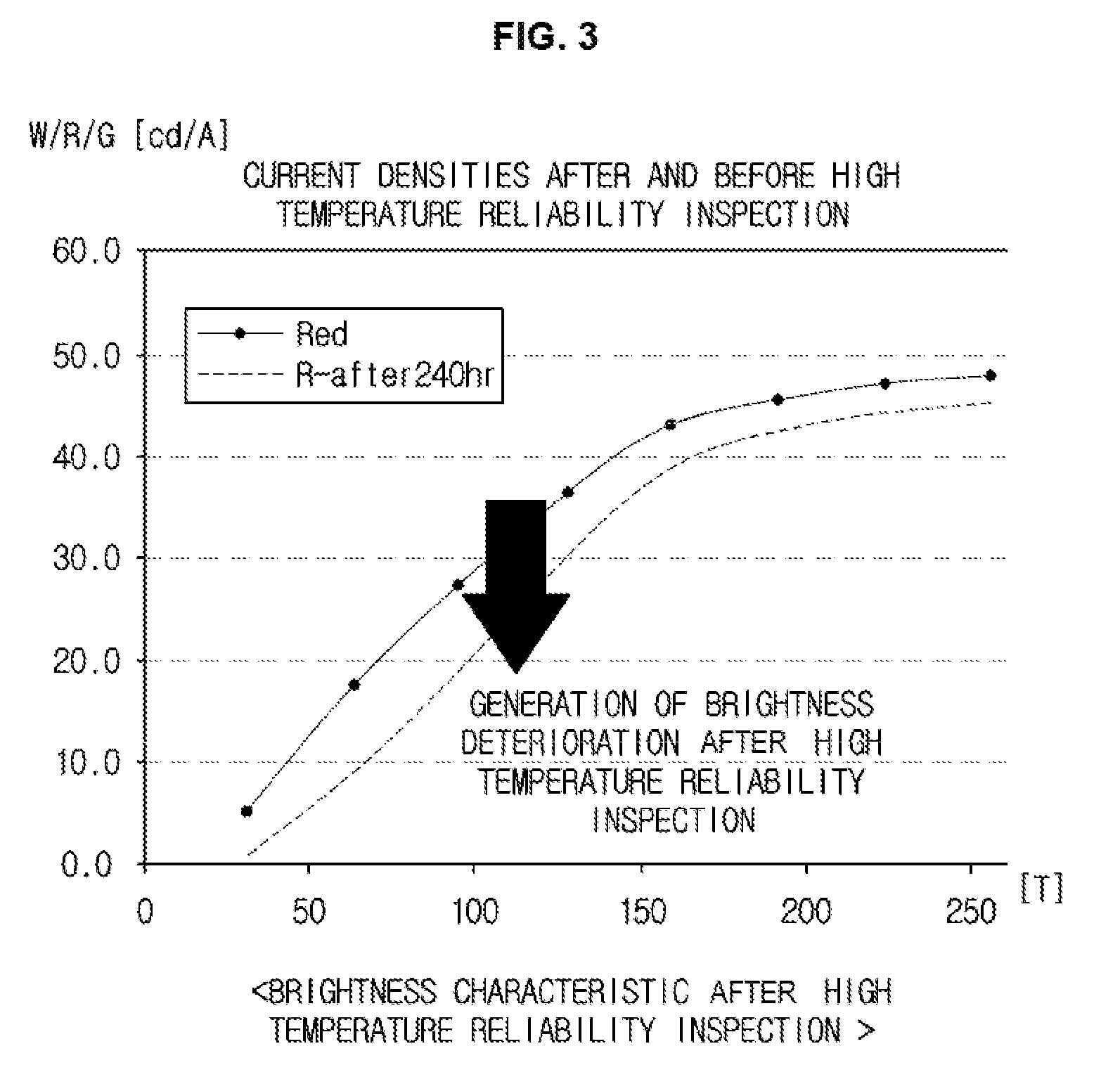Organic light emitting display device
a light-emitting display and organic technology, applied in the direction of semiconductor/solid-state device manufacturing, semiconductor devices, electrical devices, etc., can solve the problems of deterioration of the brightness of the organic light-emitting diodes, and achieve the effects of enhancing high temperature reliability, expanding life time, and enhancing light efficiency
- Summary
- Abstract
- Description
- Claims
- Application Information
AI Technical Summary
Benefits of technology
Problems solved by technology
Method used
Image
Examples
first embodiment
[0048]FIG. 4 is a cross-sectional view showing a structure of an organic light emitting display device according to the present disclosure.
[0049]Referring to FIG. 4, the organic light emitting display device according to a first embodiment of the present disclosure includes a first electrode 110 formed on a substrate, which is defined into red, green and blue sub-pixel regions, and used as a reflective electrode. Also, the organic light emitting display device includes a hole injection layer (HIL) 120 and a first hole transport layer (HTL) 125 stacked on the first electrode 110 corresponding to all the red, green and blue sub-pixel regions.
[0050]The first electrode 110 can be used as an anode electrode of an organic light emitting diode. Also, the first electrode 110 can be formed by stacking a second metal layer 110b of a transparent conductive material on a first metal layer 110a with high reflectance. The first metal layer 110a can be formed from one of aluminum Al and silver Ag....
second embodiment
[0092]Referring to FIGS. 12, 13A and 13B, the organic light emitting display device according to the present disclosure allows a first electrode 210 to be formed on the entire surface of a substrate which is defined into red, green and blue regions. The first electrode 210 can be formed in a stacked structure of a first metal layer 210a and a second metal layer 210b. A hole injection layer (HIL) 220 and a first hole transport layer (HTL) 225 each corresponding to all the red, green and blue regions are stacked on the first electrode 210.
[0093]The hole injection layer 220 can be formed of one selected from a material group which includes arylamine based compounds, such as NATA, 2T-NATA and NPNPB, and p-doped materials such as F4-TCNQ and PPDN, but it is not limited to this.
[0094]The first hole transport layer (HTL) 225 can be formed of one selected a material group of arylamine based compounds, starburst-aromatic-amine-based-materials, spiro-ladder type materials, NPD (N,N-dinaphthyl...
PUM
 Login to View More
Login to View More Abstract
Description
Claims
Application Information
 Login to View More
Login to View More - R&D
- Intellectual Property
- Life Sciences
- Materials
- Tech Scout
- Unparalleled Data Quality
- Higher Quality Content
- 60% Fewer Hallucinations
Browse by: Latest US Patents, China's latest patents, Technical Efficacy Thesaurus, Application Domain, Technology Topic, Popular Technical Reports.
© 2025 PatSnap. All rights reserved.Legal|Privacy policy|Modern Slavery Act Transparency Statement|Sitemap|About US| Contact US: help@patsnap.com



